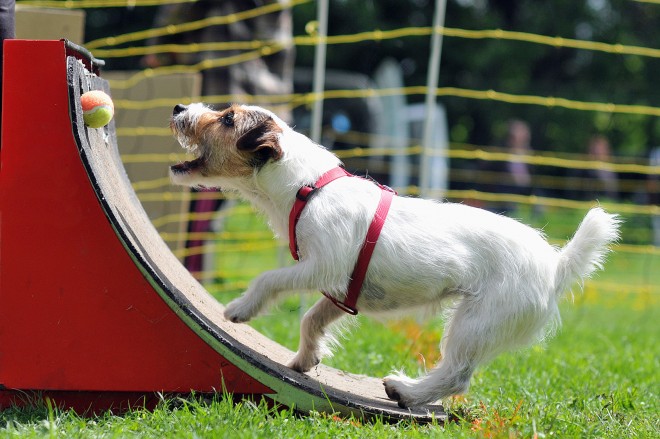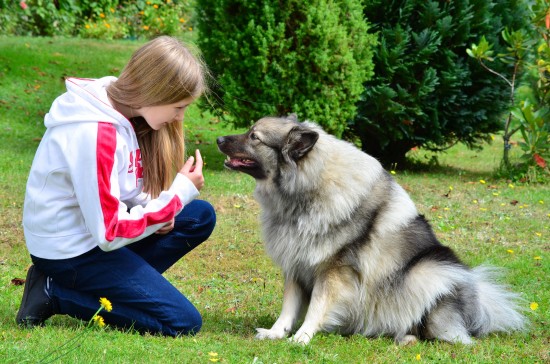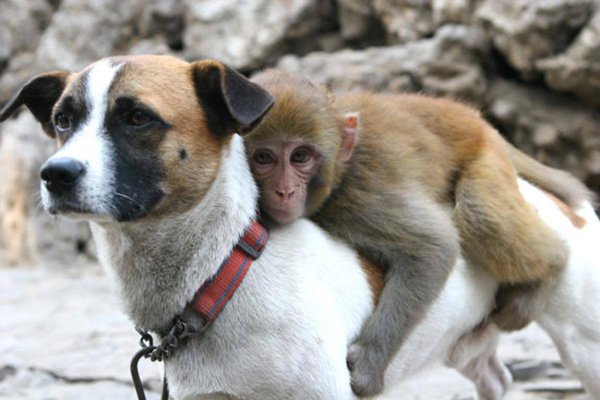
There are four common types of dog training techniques: clicker training, lure and reward, jerk and praise, and shock collar training. Each type may be effective when used properly, and each type will develop a specific kind of dog and owner relationship.
Clicker training consists of using a small clicking device to alert your dog when he or she has exhibited a good behavior. Clicking the device is usually accompanied by giving a small treat, toy or other reward. With only a slight movement of your hand, you can instantly notify your dog when a good behavior is being displayed. Clicker training is loved by many because it is a pain free method of dog education.
There are potential health risks associated with this type of training. Dogs may become overweight if treats are too large or occur to often. You will also have to remember your clicker and treats for every walk around the block.
Because this type of training focuses on positive reinforcement it can more easily foster a loving pet and owner relationship. The downside to this is that more mischievous dogs may misbehave when the promise of a reward is not available.
Lure and reward training is very similar to clicker training except that it does not require a clicking device. You will use food or praise to lure your dog into performing a particular command. Both lure and reward and clicker training are great for the positive promotion of housebreaking.
Some of the advantages of lure and reward training include how easy and efficient it is. By rewarding positive behavior you are increasing the likelihood that your dog will continue to exhibit that behavior in order to please you and be rewarded. Also like clicker training, this method may promote a ready to please dog and a relaxed and happy owner.
Lure and reward training focuses on positive behavior and does not always address what to do when a dog reacts negatively. The owner can easily reward good behavior when it happens but must come up with some way to deal with bad behavior.
Jerk and praise training is a very traditional form of dog training. A special dog training collar is used to pull back on your dog when he or she lunges forward. When your dog obeys, you must praise or you are simply punishing without rewarding.
Supporters of this training method like that it shows the dog who is the boss. Dogs have a natural pack mentality. By being the leader of your dog pack, your dog will be submissive to your wishes. There are many who believe this method borders on cruelty. When the jerk part of jerk and praise training is used incorrectly, the dog may feel pain and may not even hear your praise when they return to a sit or heel position. Another disadvantage occurs when a large dog is stronger than the owner. In this case, the owner may not be able to exhibit the force needed to pull their dog back.
Shock collar training is a controversial subject. Your dog wears a collar that allows you to shock them when they exhibit an incorrect behavior. Like clicker training, you can push a button for a quick response time. This teaches your dog there are consequences for bad behavior.
Many who use shock collars claim they only provide a mild discomforting shock similar to static electricity. Dogs, however, have various pain thresholds that may depend on hair length and other physical factors. Dogs with a high pain tolerance may not heed the warning of the shock, and those with low thresholds may become frightened at each button push. Another disadvantage to shock collar training is that it can sometimes disrupt the development of a positive dog and owner relationship.
Shock collar training is, however, considered to be a very fast method. You may be getting rid of bad habits; however, you may not be replacing them with good behaviors.
Deciding which type of training is right for you and your dog will depend on your personalities and what type of relationship you would like to foster.
 Standard Poodle Health And Longevity
Standard Poodle Health And Longevity
 5 Good Reasons To Sponsor A Dog
5 Good Reasons To Sponsor A Dog
 Six Health Essentials That You Should Monitor In Your Kittens First Few Weeks Of Life
Six Health Essentials That You Should Monitor In Your Kittens First Few Weeks Of Life
 Pet Halitosis: Five Steps To Improve Your Pets Breath
Pet Halitosis: Five Steps To Improve Your Pets Breath
 What you should know before purchasing bull terriers
What you should know before purchasing bull terriers
 Starting A New Activity With Your Dog - Its Never Too Late
Starting A New Activity With Your Dog - Its Never Too Late
 How To Assert Yourself With Dogs And Retain The Role Of Boss!
How To Assert You
How To Assert Yourself With Dogs And Retain The Role Of Boss!
How To Assert You
 Avoid Ulcer Symptoms In Horses With Natural Supplements
Avoid Ulcer Symptoms In Horses With Natural Supplements
Avoid Ulcer Symptoms In Horses With Natural Supplements
Avoid Ulcer Symptoms In Horses With Natural Supplements
 8 Travel Tips For Dogs (within The Uk)
8 Travel Tips For
8 Travel Tips For Dogs (within The Uk)
8 Travel Tips For
 Dog Breeds: Grooming A Sheltie
There are standard guidelines for grooming any thick-coa
Dog Breeds: Grooming A Sheltie
There are standard guidelines for grooming any thick-coa
 Breeding From Your Dog - Problems With Whelping
Breeding From You
Breeding From Your Dog - Problems With Whelping
Breeding From You
Copyright © 2005-2016 Pet Information All Rights Reserved
Contact us: www162date@outlook.com